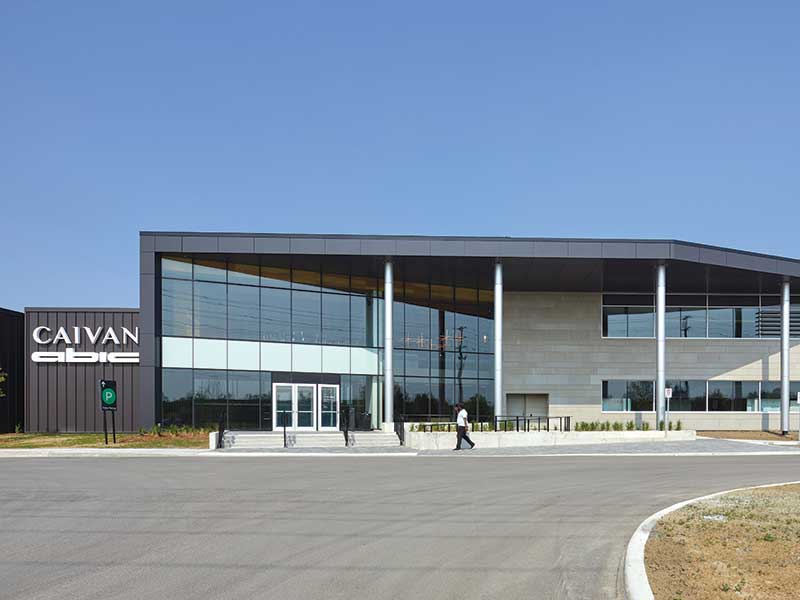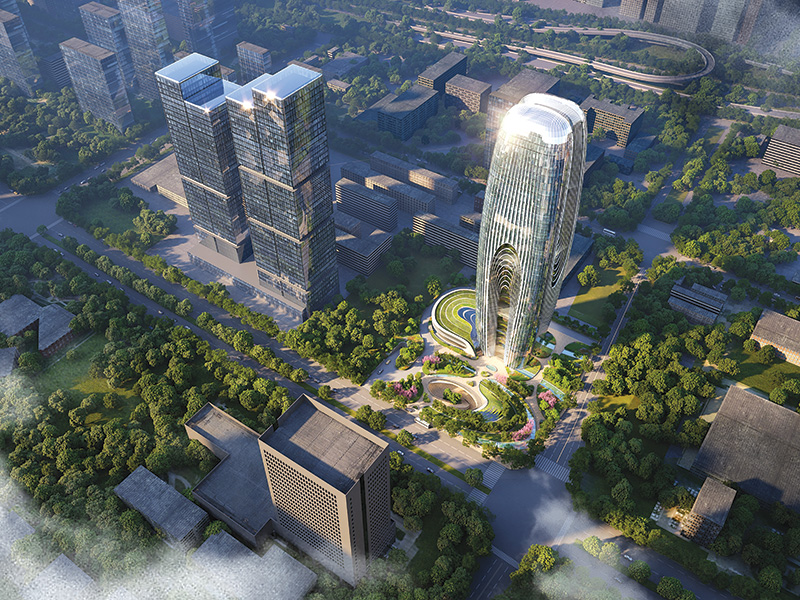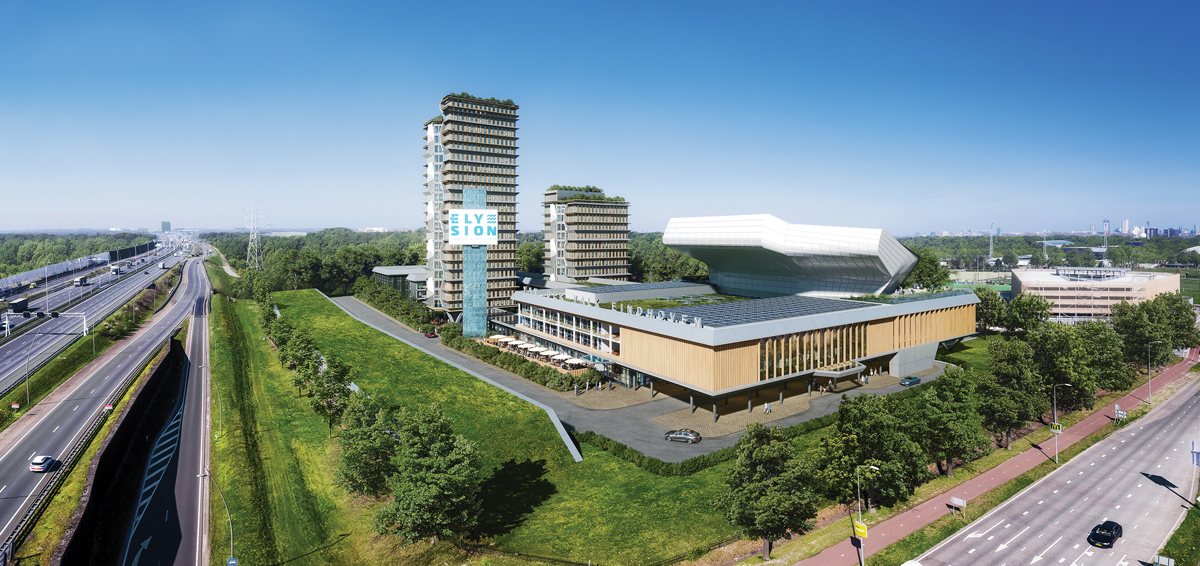
Fact File:
Client & Operator: Van der Valk Eindhoven
Location: Aalsterweg Eindhoven, Netherlands
Building surface: Total 5,900 m2
Budget: 7 million euro
Completion: 2025
Visualisations: Flying architecture
To enhance Brainport Eindhoven’s international positioning as an inspiring region of technology, design and knowledge, the Dutch city of Eindhoven has the ambition to realise a clearly identifiable, new, state-of-the-art congress and conference centre.
The consortium’s ambition is to expand the existing multifunctional space to a total area of 4,000 m2 and add a new 1,500 capacity flexible auditorium with a vertical foyer housing breakout spaces and catering areas. UNStudio’s design proposal for the Elysion Congress Centre (ECC) has been structured around 5 architectural interventions:
High impact landmark, low impact on surroundings
The challenge for the city to create a landmark building, alongside the challenge to maintain operations during the construction process, resulted in a unique design solution in which the extension of the congress centre is placed next to the existing building, while the auditorium is placed on top of the conference centre building.
This large cantilevered auditorium structure makes it possible to keep the existing hotel and conference centre fully operational during construction, while creating a clearly identifiable building with access to green parkland, excellent connections, and space for logistics.
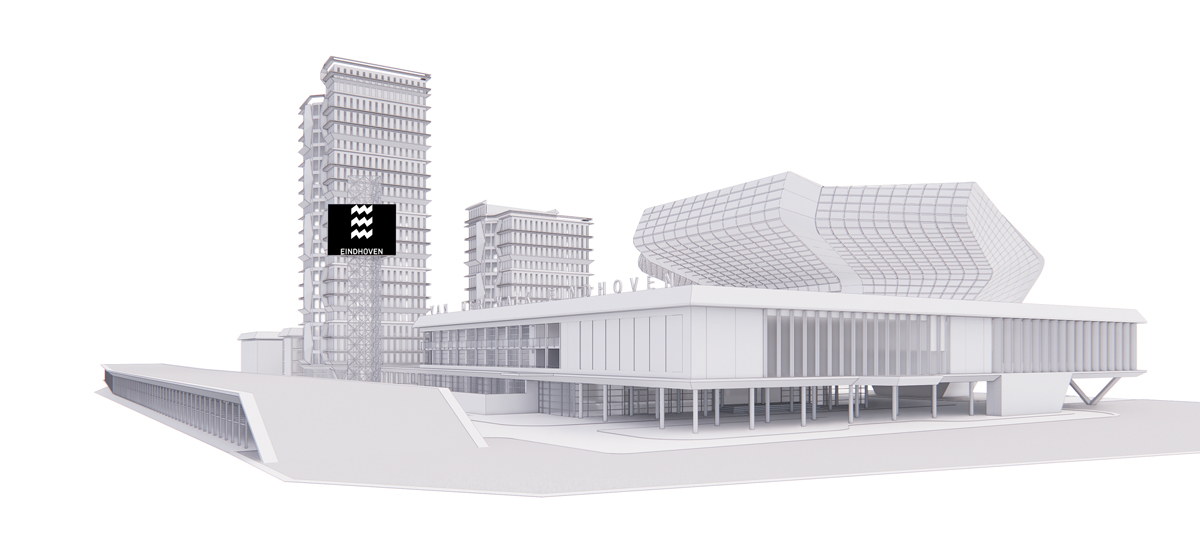
A foyer that connects people and programme
With its wooden staircases and vertical green gardens, the foyer functions as the main connector from the ground floor through the different levels of the building. This vertical foyer also houses multiple areas for relaxing, working and informal meetings for visitors. It also connects the entrances to the congress and conference areas (with multiple bars and access to outside spaces), and all the facilities and main logistics.
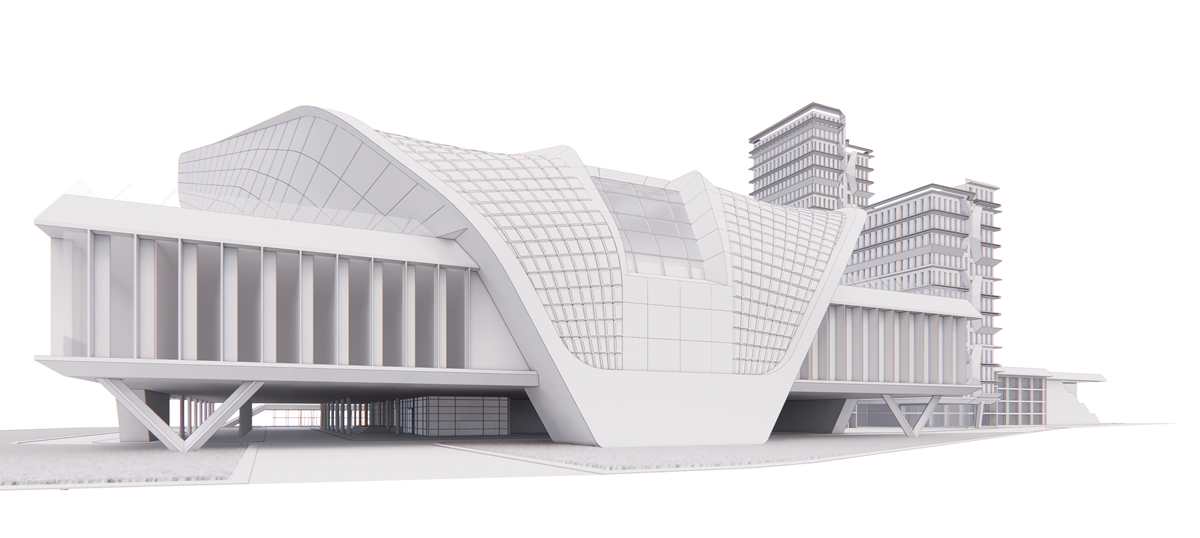
Sustainable approach
The ECC is located at the border of the Genneper Parken, a large green space between the Brainport Avenue, the high-tech campus and the city centre. The integration of the project into the Genneper Parken is visible on multiple levels. The park landscape flows onto the roof and under the elevated building. Visitors can relax on the roof or in the shade under the building or enjoy the sport facilities.
A part of the existing hotel building will be demolished to strengthen the ecology of the adjoining important waterway and brook valley with high scenic, ecological and cultural-historical value.
The facade of the congress centre is principally made from wood and glass. The ambition is to couple this with nitrogen dioxide absorbing surfaces - an innovative new nano-technology that can capture pollutants from its surroundings.
The new buildings will also be energy positive, generating more energy than they consume. By using innovative bromide flow batteries, energy can be stored for use during peak times. In addition, the location houses the largest regional charging station for electrical cars. The green ambition for the project is also expressed in the application for a BREEAM Outstanding rating for the design.
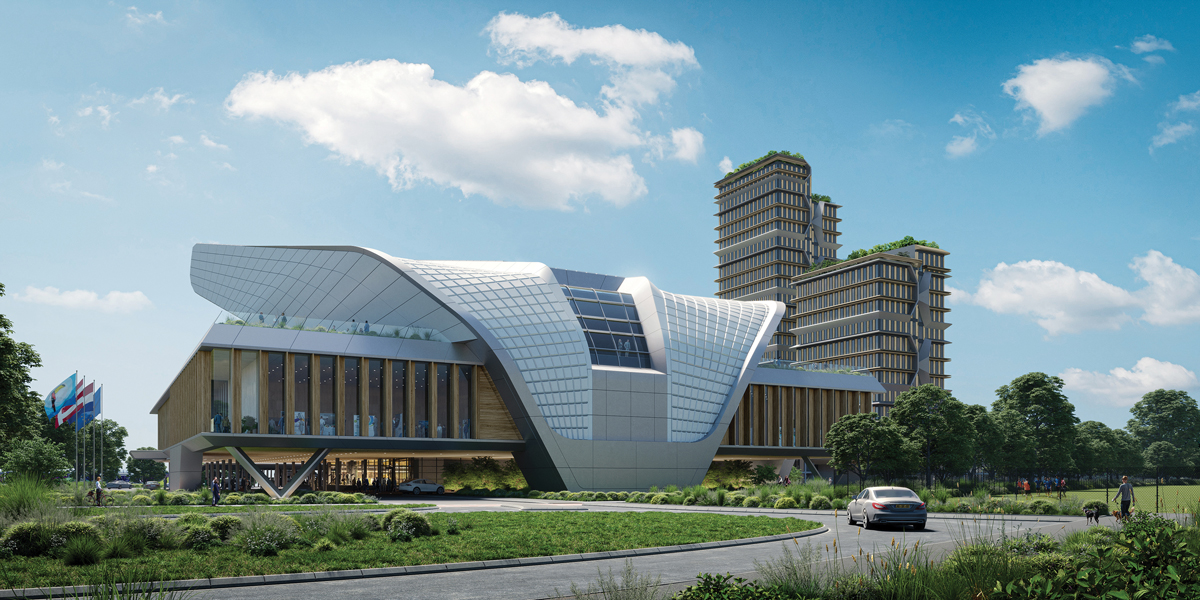
New mobility hub
The expansion of the congress facilities also necessitates an extension in the number of hotel rooms, parking spaces and leisure facilities. To accommodate this, the intention is to create a second hotel tower that manifests sport and leisure, while the parking area is a green extension, placed alongside Brainport Avenue.
By creating a sustainable mobility hub - with the existing park and ride and the new parking facilities - the location can not only become one of the main charging stations for electrical cars, it can also offer green alternatives for travel.
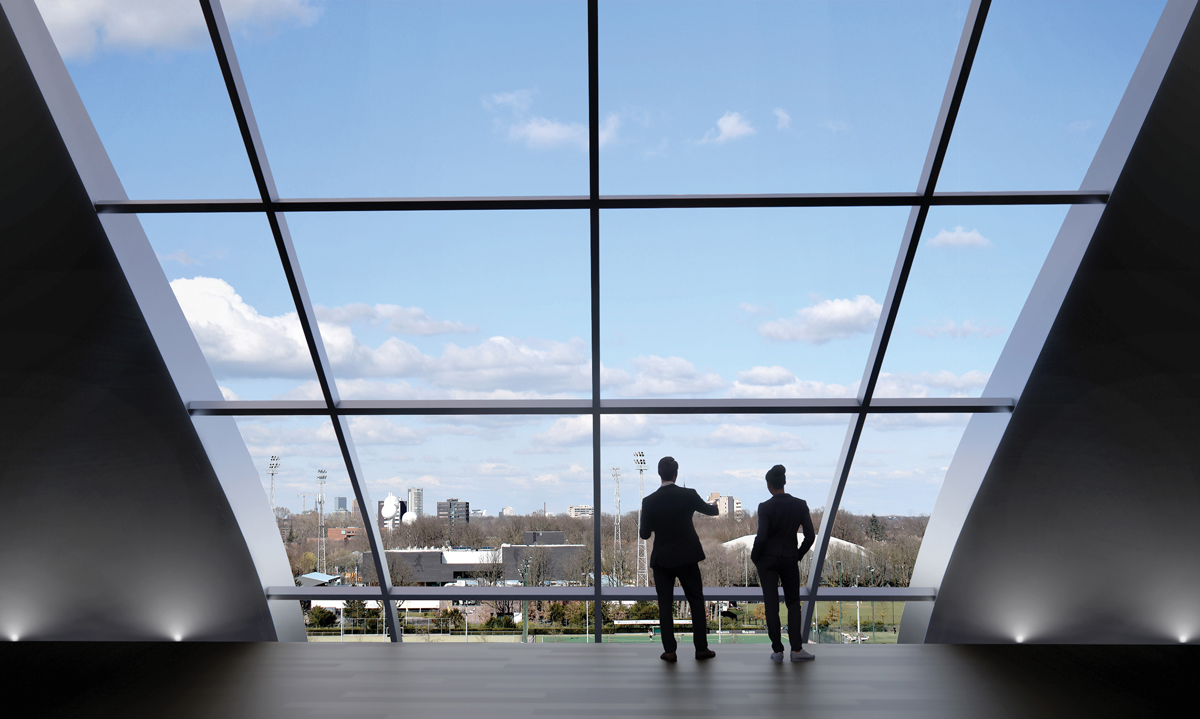
Feasible exploitation
In order to ensure financial feasibility, a proposal was developed to create a flexible and hybrid design for the 1,500-seat auditorium. By creating different configurations within the conference space, the auditorium can be divided into four independent smaller auditoria, enabling smaller conferences to take place simultaneously. Retractable seating also makes it possible for the lower auditorium to be used as a banquet hall when the other conference rooms are in use. In addition, a recording studio located in the conference centre will make it possible to host hybrid online and live events. The main structure of the auditorium is built from a combination of wood and steel, while a large window provides spectacular views of the skyline.
